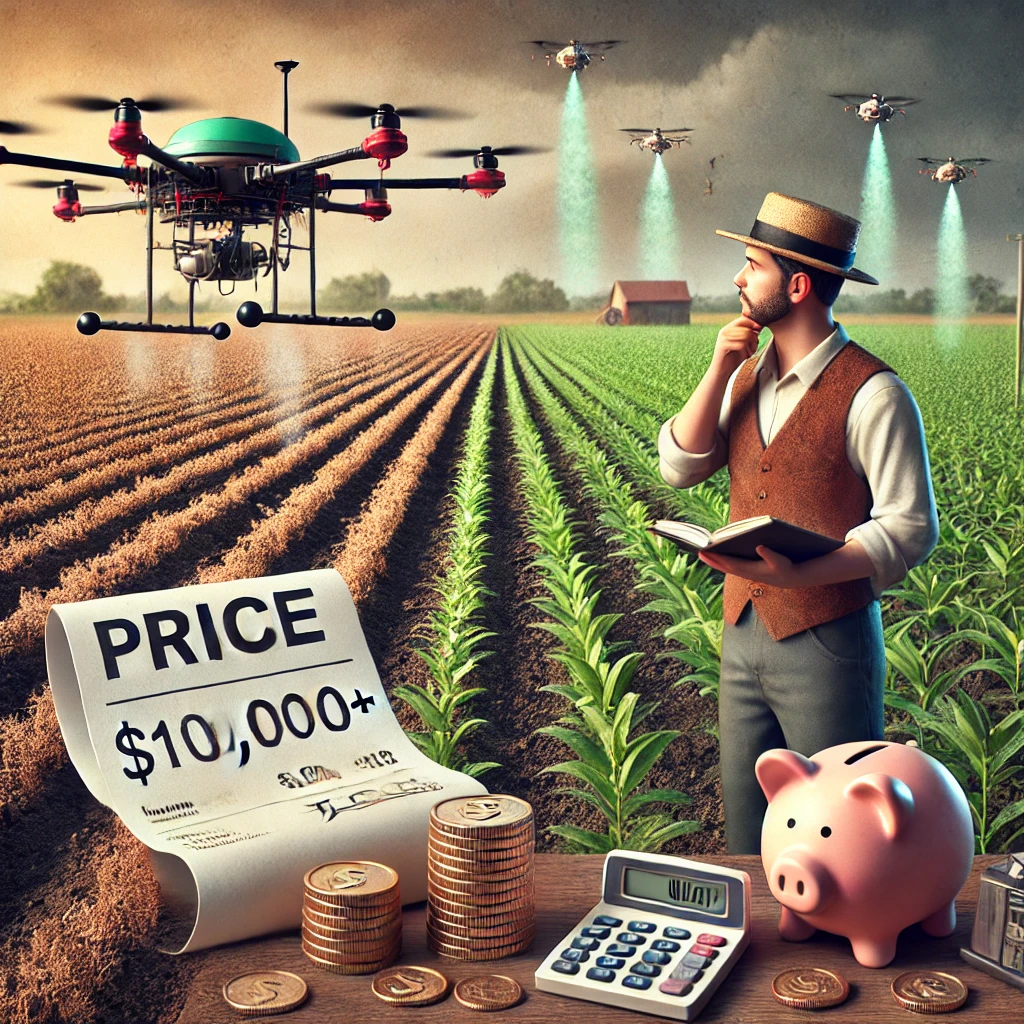Drones are Revolutionizing Agriculture
Drones are bringing a revolution in the agricultural sector, providing farmers with unprecedented insights into crop health, soil conditions, and irrigation needs. However, implementing drone technology in agriculture is not as simple as it seems. Despite its numerous advantages, several challenges hinder its widespread adoption. From high costs to legal restrictions, let’s explore the key challenges that farmers and agribusinesses face when integrating drones into their operations.

High Costs
The cost of drones and the necessary training and equipment required to operate them can be quite high, especially for small-scale farmers. This financial burden makes it difficult for many farmers to invest in drone technology.
Legal Restrictions
Many countries have strict regulations regarding the use of drones, such as obtaining flight permits and adhering to airspace restrictions. These legal barriers can pose significant challenges for farmers looking to use drones in their agricultural practices.
Need for Technical Expertise
Operating drones and interpreting the data they provide requires specialized skills. For some farmers, acquiring and applying this technical knowledge can be a daunting task.
Data Management
Drones generate vast amounts of data, which require appropriate tools and systems for effective utilization. Without proper data management solutions, the valuable insights provided by drones may go underutilized.
Environmental Impact
The use of drones can also have environmental consequences, such as noise pollution and air pollution, which may become a concern in certain regions.
Despite these challenges, drones have the potential to play a crucial role in the agricultural sector, provided that appropriate measures are taken to overcome these obstacles. With the right support and technological advancements, drone technology can significantly enhance farming efficiency and sustainability.
High Initial Costs and Investment
One of the biggest challenges of implementing drone technology in agriculture is the steep upfront cost. High-quality agricultural drones equipped with advanced sensors and cameras can cost anywhere from 1,000to1,000to25,000 or more. For small-scale farmers, this can be a significant financial burden.
But it’s not just the drone itself—there are additional expenses like software licenses, maintenance, and training. Farmers also need to invest in data analysis tools to make sense of the information collected by drones. While the long-term benefits, such as increased yields and reduced resource usage, can outweigh these costs, the initial investment remains a major barrier for many.

Regulatory and Legal Hurdles
Another major challenge is navigating the complex web of regulations surrounding drone usage. In many countries, flying drones for agricultural purposes requires special permits and adherence to strict guidelines. For instance, drones must often stay below a certain altitude, avoid no-fly zones, and operate within line of sight.
These regulations are in place to ensure safety and privacy, but they can be a headache for farmers who just want to streamline their operations. Additionally, laws vary widely between regions, making it difficult for agribusinesses operating across borders to stay compliant.

Technical Limitations and Skill Gaps
While drones are becoming more user-friendly, they still require a certain level of technical expertise to operate effectively. Many farmers, especially older generations, may struggle to learn how to pilot drones or interpret the data they collect.
Moreover, agricultural drones are only as good as their sensors and software. Poor-quality equipment can lead to inaccurate data, which defeats the purpose of using drones in the first place. Bridging this skill gap through training programs and user-friendly technology is crucial for successful implementation.

Data Management and Privacy Concerns
Drones generate massive amounts of data, from high-resolution images to detailed soil analysis reports. Managing and analyzing this data can be overwhelming, especially for farmers who lack the necessary tools or expertise.
Privacy is another concern. Drones can capture images of neighboring properties, raising questions about data ownership and usage rights. Farmers must ensure they comply with data protection laws and address any privacy concerns from their community.

Environmental and Operational Challenges
Weather conditions can significantly impact drone performance. High winds, rain, or extreme temperatures can ground drones or affect their ability to collect accurate data. Additionally, operating drones in large or uneven fields can be tricky, requiring careful planning and coordination.
Battery life is another limitation. Most agricultural drones have a flight time of 20-30 minutes, which may not be enough to cover large farms. Farmers often need multiple batteries or backup drones to complete their tasks efficiently.

Conclusion: Overcoming the Challenges
Despite these challenges, the potential of drone technology in agriculture is too great to ignore. By addressing issues like cost, regulation, and technical skills, farmers can unlock the full benefits of drones—improved efficiency, higher yields, and sustainable practices.
For agribusinesses looking to stay ahead of the curve, investing in drone technology is a step toward a smarter, more productive future. With the right support and resources, the challenges of implementing drone technology in agriculture can be overcome, paving the way for a new era of farming.


